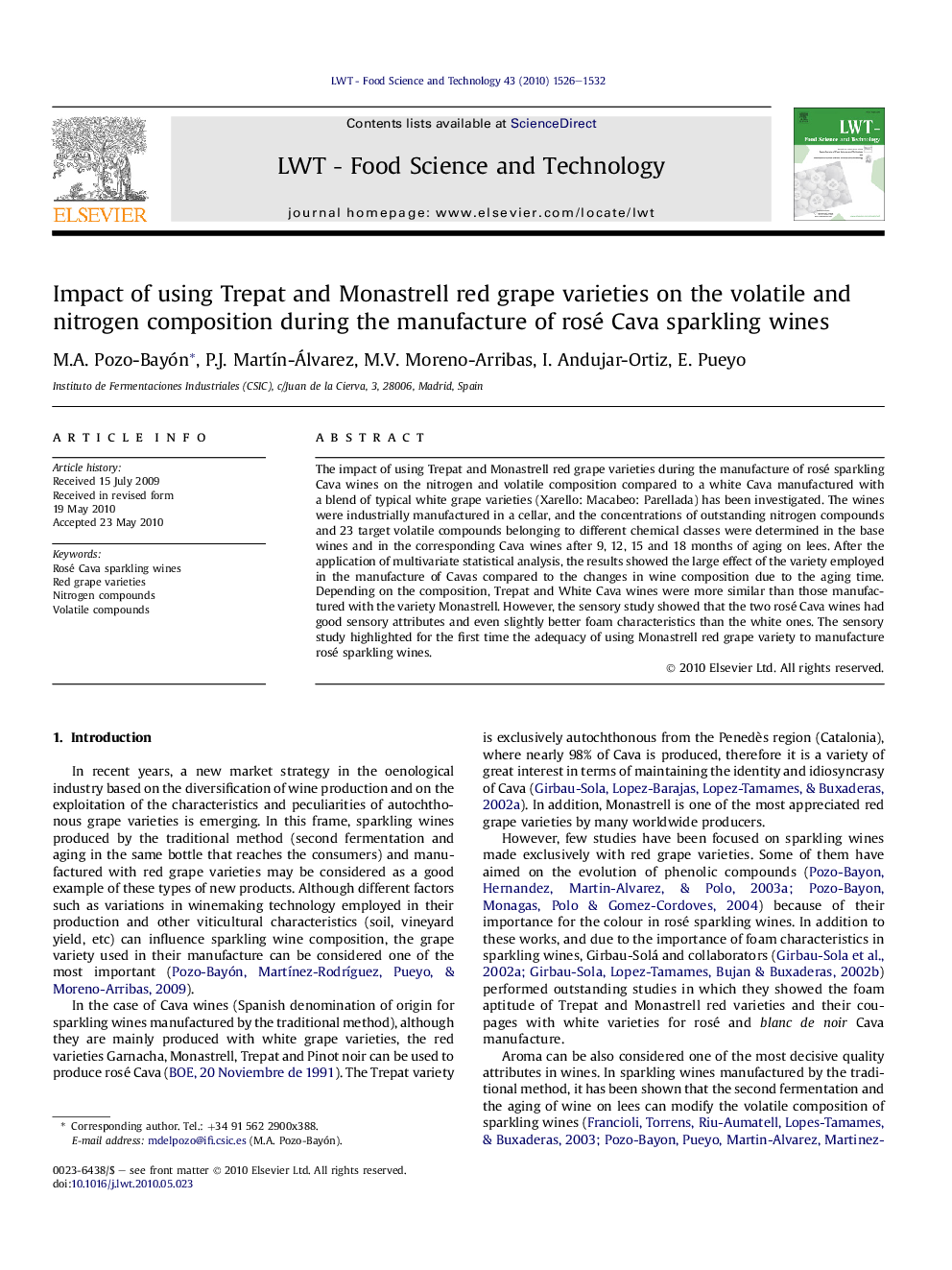| Article ID | Journal | Published Year | Pages | File Type |
|---|---|---|---|---|
| 4564295 | LWT - Food Science and Technology | 2010 | 7 Pages |
The impact of using Trepat and Monastrell red grape varieties during the manufacture of rosé sparkling Cava wines on the nitrogen and volatile composition compared to a white Cava manufactured with a blend of typical white grape varieties (Xarello: Macabeo: Parellada) has been investigated. The wines were industrially manufactured in a cellar, and the concentrations of outstanding nitrogen compounds and 23 target volatile compounds belonging to different chemical classes were determined in the base wines and in the corresponding Cava wines after 9, 12, 15 and 18 months of aging on lees. After the application of multivariate statistical analysis, the results showed the large effect of the variety employed in the manufacture of Cavas compared to the changes in wine composition due to the aging time. Depending on the composition, Trepat and White Cava wines were more similar than those manufactured with the variety Monastrell. However, the sensory study showed that the two rosé Cava wines had good sensory attributes and even slightly better foam characteristics than the white ones. The sensory study highlighted for the first time the adequacy of using Monastrell red grape variety to manufacture rosé sparkling wines.
